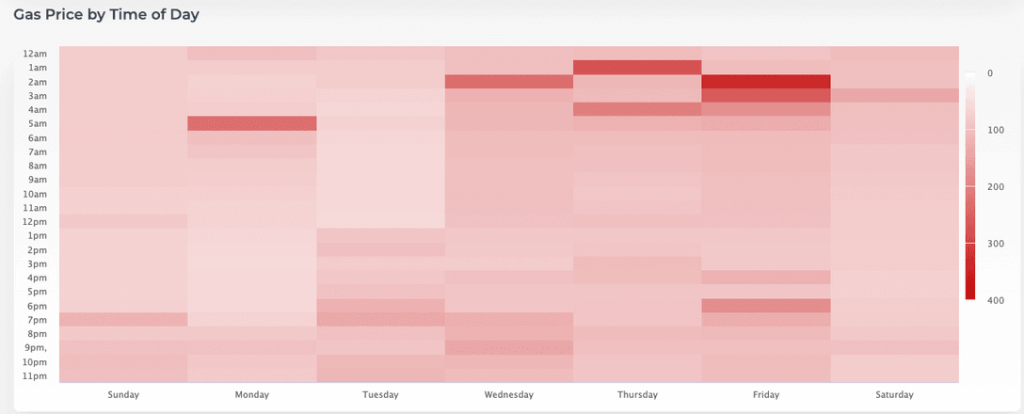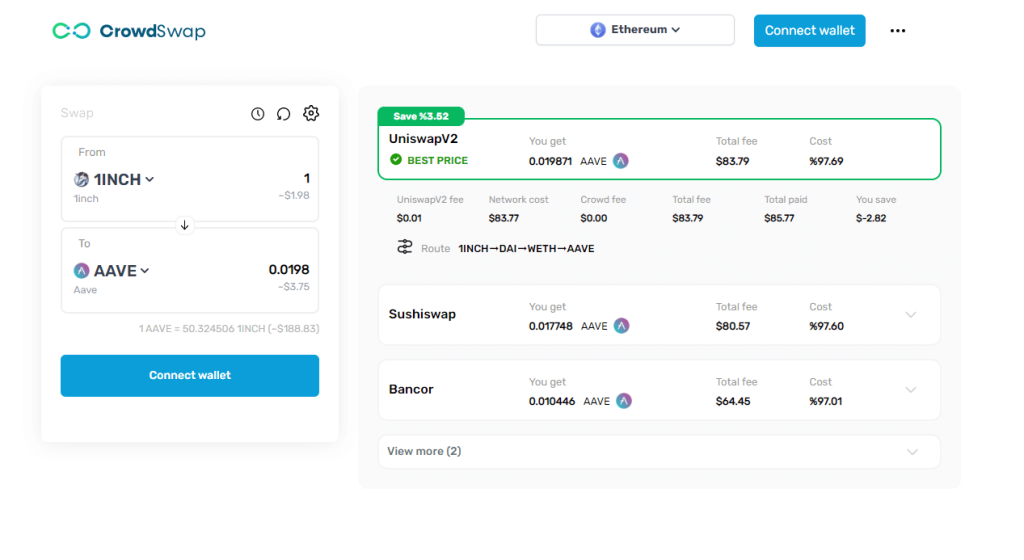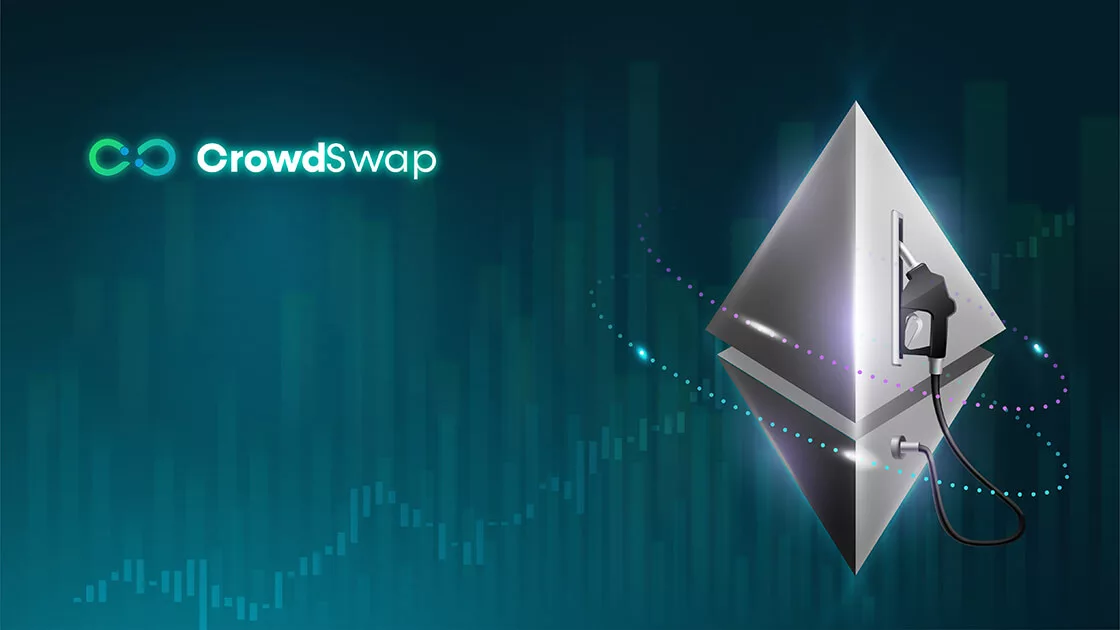Gas fees on the Ethereum network have always been a challenge for its users. Everyone who intends to conduct a kind of transaction on the Ethereum network has to pay an amount of gas, the value of which is always fluctuating widely. From buying and selling NFTs and transferring assets that are on the Ethereum network to executing a smart contract for any purpose, users have to pay varying amounts of gas fees.
Factors like network congestions lead to the increase in gas prices, putting pressure from time to time on the users. To deal with this issue, users always look for ways to save on Ethereum gas fees. Reducing high gas fees on Ethereum has been so important for the community that there are services around the web that tell you what time of day is best for conducting transactions for less gas fees.
Before going any further, let’s take brief a look at what gas fee is and why it fluctuates.
What Is Gas Fee?
Consensus, which guarantees that all members in the network agree on a certain state of the network, is one of the fundamental pillars of blockchain. In Proof of Work (PoW) consensus algorithms -which Ethereum uses-, miners employ their computing power and resources to solve mathematical puzzles. The privilege of adding that particular transaction to a block would go to the first miner who solves the puzzle.
In order to incentivise miners to process a transaction, an amount is paid to them. Therefore, gas fees are essentially transaction fees that are paid to miners who are participating in the Ethereum network. In a nutshell, users of blockchain networks have to pay an amount of gas fee to miners in order for their transactions to be written and recorded on the block. The amount of this gas fee is constantly changing due to the fluctuating amount of traffic of transactions.

Credit: https://ycharts.com/
Why Are Ethereum Gas Fees Always Changing?
Basically, the supply and demand model plays a big role in an Ethereum gas fees calculator. In the event of greater transaction demand, miners may choose to process transactions that yield them higher gas fees. As a consequence, users would have to pay more gas in order to have their transactions processed faster or even be successful at all. Technically, higher demand for transactions may sometimes result in network congestions, which increases the gas fees.
The rise in popularity of the decentralised finance (DeFi) movement has put a lot of strain on the Ethereum network, which hosts the bulk of dApps. At the peak of the popularity of DeFi, users had to pay miners greater and higher transaction or gas fees. Consequently, some DeFi users may find it uneconomical to engage with decentralised apps.
With Ethereum 2.0, the gas problem will be resolved as promised by the co-founder of Ethereum, Vitalik Buterin. However, the update, which will be implemented in subsequent stages and would strengthen the network in many ways, could take years to complete. In the meanwhile, users can utilise a number of methods to reduce their Ethereum gas prices and find the lowest crypto transaction fees.
How to Pay Less Gas Fee on Ethereum?
The demand for less Ethereum gas prices has led to some solutions with which gas fees can be significantly lowered. In this article, we make five suggestions as follows.
- Invest in a Layer-2 solution
Since 2017, Ethereum’s high gas prices have been a reoccurring issue. This has generated a slew of layer-2 solutions, all of which try to dump some of Ethereum’s transaction volume to a separate network before validating the results on the main chain.
These can vary greatly in terms of shape and function, but many of the more popular options have been well battle-tested and can save consumers a significant amount of money on gas.
The most popular universal layer-2 solutions for Ethereum are Polygon, Arbitrum, and Optimism. According to data from L2Fees, they can reduce fees by up to 90% when transferring tokens and somewhat less when transferring ETH.
- Track Network Congestion
Your transaction may be put on hold if the number of transactions on the Ethereum blockchain skyrockets. The gas fee keeps rising as the transaction is put on hold. As a result, once the execution process begins, your recommended gas limit will most likely decrease below the current rate. In this situation, the issue would be the potential loss of your gas payments due to an unfinished transaction.
Therefore, you should keep a watch on the Ethereum gas fees chart to track trends and make decisions. The general consensus is that you should schedule your Ethereum transactions during non-peak hours.
You can use websites like https://ethereumprice.org/gas , which show you the best time of day and week during which gas fees are lower.

It is advisable to use Ethereum gas charts to find out what the current gas cost prices are in your local time zone. The chart can be used to calculate an accurate estimate of gas costs as well as to determine the ideal gas limit.
- Make Use of Gas Tokens
When gas prices are low, you can mint gas tokens and then salvage them when prices are high, receiving a refund in ETH to help cover your gas costs.
The storage refund system in Ethereum allows gas tokens to function because it reimburses Ethereum users who delete storage variables. This motivates individuals to keep Ethereum’s state from becoming bloated.
So, using gas tokens, you basically take a snapshot of Ethereum’s state when gas costs are low and then redeem that state when gas prices are higher in order to obtain an ETH refund, which ultimately makes the crypto transaction fees less expensive.
- Use Platforms for Finding the Best Price
Currently, there are platform that can show you the best options to swap tokens to each other with the best possible price. Platforms like CrowdSwap can save you a lot of time that you would otherwise spend searching for the perfect platform to ward off gas fees. On a single webpage, CrowdSwap offers various options to swap your tokens and recommend the best choice, which has low gas fees.
In the example below, you can see that the CrowdSwap web app has provided multiple options for swapping the 1INCH token to AAVE. The one at the top has the lowest cost, and this can help you save time and money for swapping your cryptocurrencies to each other.

- Choose The Right Time
Currently, there is no method to decrease the gas unit’s impact directly, but there are ways of reducing your overall fee by cutting the base fee and tip.
You could execute your transaction on the network during a time when fewer people are using the blockchain to lower the cost of your total gas fee by paying a lower base fee. This is because base fees are, in some ways, a reflection of demand for Ethereum. When more work is needed to engage with the Ethereum network, gas prices rise. When there are more users attempting to communicate with the network, more work is necessary.
As a result, if you can discover a period when there is less need to connect with the Ethereum network, you can save money on gas by lowering the transaction’s base price. Weekends are typically the ideal time to do so.
Lowering your tip is another way to save money on your total gas bill. Remember that our tip, also known as a priority fee, is a price we can charge miners in exchange for a speedier transaction time. Reducing your tip can be another option to save money on petrol if your transaction isn’t time-sensitive and you’re ready to wait.
Endless Opportunities Await
Unlock endless possibilities with our feature-packed decentralized crypto exchange
Wrapping It All Up
The issue of high ETH gas prices isn’t going away anytime soon. These prices will drop significantly in the near future, thanks to the introduction of layer-2 scaling solutions and ETH2.
However, we must deal with these prices for the time being. So, the next time you need to do an Ethereum transaction, don’t do it blindly. Check the time of day, or see if the identical transaction can be done on a scaled solution, and so on. You can save a lot of ETH right now by toughening up your approach to gas.













